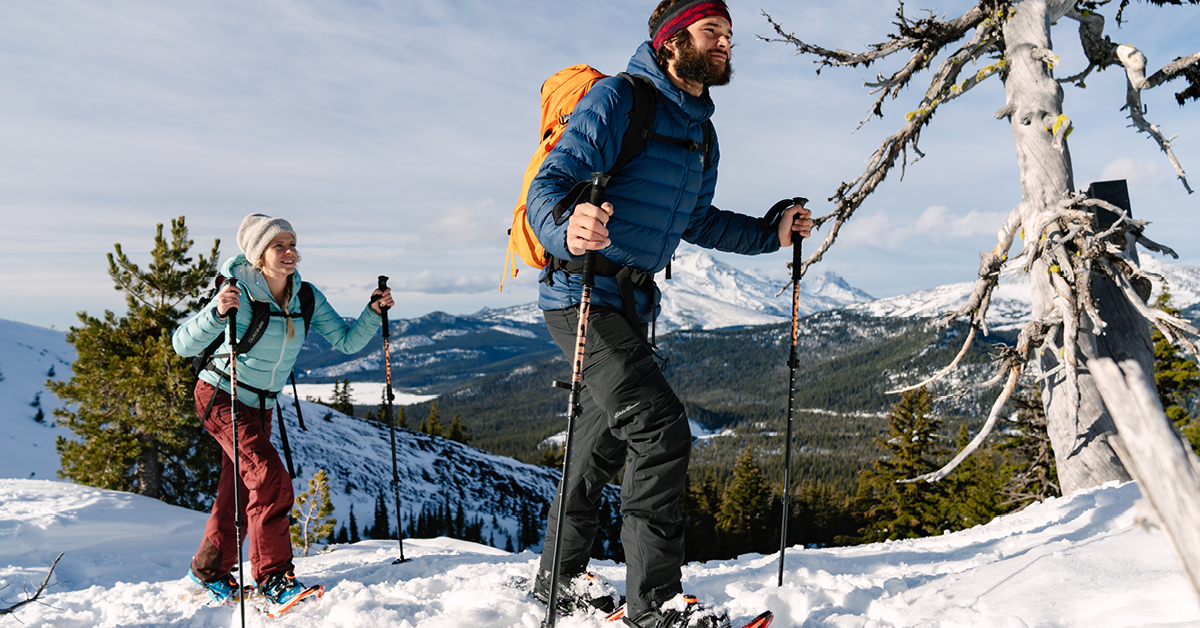How to prevent and treat foot blisters
Outdoor Activities | March 28, 2024
Win a trip to Crete by becoming an Explore + member
SAIL
September 24, 2021

Is there really a technique for snowshoeing? Learn more about it before you hit the snowy trails.
Snowshoeing is not just about putting one foot in front of the other. On the other hand, it is an easy sport to do and is suitable for all levels; from beginner to advanced.
There are several tips that can help you get a good gait and more balance and grip on the snow.
Choose the right snowshoes and go out to practice on the field.
SnowshoesSnowshoes Accessories
When you’re slogging away in deep powder without snowshoes and your foot disappears below the surface, that’s called ‘postholing’. If you add a heavy pack full of winter camping gear or a bloated daypack on your shoulders, you’ve got even more grief on your hands.
Snowshoes lessen that sinking feeling by spreading your weight over a greater area with flotation. Instead of ‘postholing’ in the deep white fluff, they help you move more freely over the snow. Wearing them gives you access to what might otherwise be a no go zone in winter.
If your last snowshoeing experience involved walking around with what felt like two giant tennis racquets strapped to your feet then you’re in for a surprise.
The new models are radically different from those wooden snowshoes that look so good over a fireplace. The classic wooden snowshoes have large surface areas that give solid flotation in the deep white stuff. Hunters also like them because they make natural sounds in the bush which is less likely to scare off game.
Nonetheless, today’s designs are lighter, less awkward and give you greater traction on hills and icy surfaces.
Sizing snowshoes is based on your body weight. Also consider whatever weight you’ll be carrying and the type of terrain you expect to be on most of the time. The more weight they have to carry, the more surface area you’re going to need for the best possible flotation.
If packed trails are where you’re headed, you can afford to size on the short side. You’ll have better maneuverability which will quicken your pace.
If exploring off trail is your pleasure, stick to brand suggestions in terms of size and remember to factor in pack weight and snow depth. A longer shoe will certainly give you the best possible flotation, but with some of the mammoth sized models available it may seem like walking around with two planks strapped to your feet.
For runners, there are even snowshoes designed to keep you running even in the snow.
For better climbing, most brands offer models that use a heel lift. When it’s engaged your heel rests on top of a bar across the rear of the snowshoe. On steep ascents, it prevents overextending the back of your calves which means less strain, especially on sustained climbs. They also keep the tails down and weight on the teeth of the rear crampons giving them more of a bite. The benefit is solid traction even in icy conditions.
Another feature that differentiates snowshoe models? The bindings. Some have ratchet style systems similar to a snowboard while others use designs based on nylon webbing and plastic cradles. If you plan on climbing a lot look for a binding that holds your boots securely so you can trust your footing. Otherwise, choose a binding that you’re comfortable using and fits your boots properly.
In terms of mastering the basic skills of snowshoeing, there’s not much more to learn than putting one foot in front of the other. Think of adding hiking poles to your gear. They’re especially useful for beginners to keep their balance, but also for off-trail hiking and climbing up and down hills. Choose an adjustable model and adjust the height as you need stability during your trip.
Also consider bringing gaiters. They are very useful when hiking off-road to prevent snow from getting into your boots.
Finally, consider snowshoe tails to increase the length of your snowshoes if you need more flotation depending on the level of difficulty of your hike, snow conditions or the weight of your load.
Although walking on snow is relatively basic, some controlled movements will help you reach your destination more easily.
Walk as usual, but keep your feet far enough apart to avoid trampling your snowshoes.
If the snow is soft and powdery, walk with your foot in the snow to push it down and create a step that will give you more upward momentum. Also rely on your heel pad to propel you.
If the slope is slippery and icy, rely on your crampons and hiking poles (you’ll probably have to shorten them) to help you make the climb. If it’s too difficult, try the side-hill climbing technique (digging in the snow with the side of your snowshoe to create a step) or try to find an alternate route.
Put your poles straight out in front of you for support (you may need to extend them) and heel first, keeping your weight back.
Happy Trails!